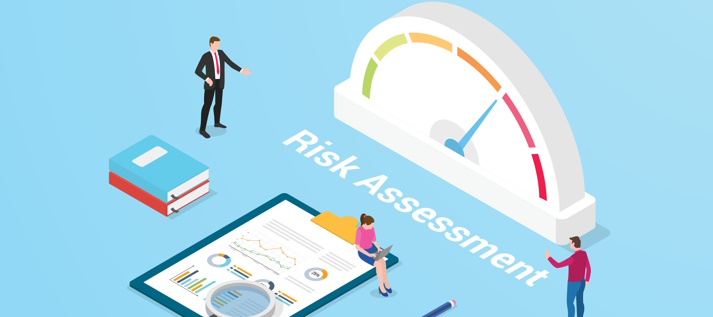During lunch, at a pitch-focused investment conference, I had my first light bulb moment that then became the catalyst for the 7 Keys to Passive Investing in Multi-Family Real Estate.
It became clear to me that conversations in this space tend to be one-sided. And listening to an investor over lunch, the switch flipped for me.
He said, “We love coming here, and there’s high value, but I’d love to hear from successful investors.”
I thought about lessons investors have learned, questions they ask themselves in the process, their own experiences, and, ultimately, how they vet sponsors.
“It’d be great to have more of a dialogue with our peers,” he said.
That off-hand comment stuck with me for years, and I made it a goal to find a solution to that problem. One I believe could change the face of how investors vet sponsors and improve investor-sponsor relationships.
Hence, the 7 Keys were born, and I hope that this resource adds real value to you, the investor.
Whether you are a brand-new or an experienced investor, all you need is an interest in passive investing in multi-family real estate to use this tool. It is structured to be a guide that you can continually revisit as you enter new sponsor relationships.
The 7 Keys is a funnel-like system of criteria chronologically organized so that you begin with the first and only move forward when you feel comfortable. The aim is for the investor to figuratively drop the sponsor into the funnel and assess them as the funnel narrows.
The 7 Keys to Passive Investing in Multi-Family Real Estate: Trust, Track Record, Team, Transparency, Type, Thesis, Terms.
The first four are critical in vetting a sponsor, and the last three relate to evaluating the deal itself.
Now, we explore them.
1. Trust
Trust is the most crucial key: a barometer to assess as you make your way through the rest of the funnel. At this stage, you’ll likely come across initial material, introductions, and questions, where the initial gut check takes place.
Trust provides the foundation that everything else builds on. As you move on, you can use what you learned in this stage as an interpretive guide through the remaining criteria.
2. Track Record
Look at the data the sponsor presents. The most critical piece to evaluate here: does the sponsor under-promises and overdeliver?
A valuable point of data to look for when reviewing their deal portfolio is the difference between their pre-closing projections and how the deal performed. That difference, or lack thereof, speaks volumes to the potential sponsor’s Track Record.
Also evaluate the following: What are the different deals a sponsor is pursuing, and, a crucial point of consideration, how does their track record, and the various investment deals the sponsor has done in the past, compare to their current strategy?
3. Team
Team is everyone who touches the deal.
Get an understanding of who the decision-makers are. What is their investment philosophy regarding the deal type, risk, and targeted return?
There’s the acquisition department: the boots-on-the-ground team members searching for the best deals available and the folks on the asset or property management side.
Other distinctions to consider before moving on are how the sponsor will manage the asset and whose held accountable if something goes wrong. Pinpointing the layers will help you better understand the communication and management models.
4. Transparency
Transparency comes down to communication: reporting, team accessibility, online portals, and support processes.
The easiest way to evaluate a group is to ask for and review company and deal-specific materials during your initial conversations. Data availability and the type of data provided are crucial here.
Before moving onto Type, ask yourself whether you’ll have access to the information you want when you need it.
5. Type
Type is the first of the 7 Keys that guides you through how to vet a deal itself: it’s about gauging the investment deal against your knowledge and risk tolerance.
Deals fall on a spectrum between newer and older property. While the newer property typically produces a lower initial return, an older property will require substantial upgrades and creates a higher initial return.
Along with reflecting on the sponsor’s experience and ability, understanding your own return goals and risk tolerance are part of the internal evaluation. Deals sit on a value-add continuum ranging from management, which often brings quick and positive results, to physical-rehab value-add, which usually requires more time and resources, yet yields higher returns.
Consider the project timeline. For example, a short schedule for a reputation value-add should raise a red flag.
And most importantly, do you have a solid understanding of the expected rate of return, your risk tolerance, and the business plan and timeline for the deal?
6. Thesis
Does the story make sense? Complete another gut check when analyzing the high-level business plan. The more knowledge and experience you have, especially with the given sponsor, the more accurate your gut check.
Here are a few simple questions that can provide clarity: Why are we getting a good deal? Does it make sense if you explain the investment deal to a friend? What could go wrong? What are the best and worst-case scenarios?
7. Terms
First, evaluate the fine lines and whether the underwriting numbers and details match the narrative.
Second, consider the projected returns and what assumptions the sponsor controls versus external or market assumptions. Look for the difference between the forecasted returns and actual returns of past deals. Directly ask the sponsor the likelihood of the return performing better than forecast. Asking will bring light around the conservative forecast nature, or lack thereof.
Lastly, analyze the fees: how does the sponsor participate in the deal, and is their return aligned with yours?
The sponsor participation should be transparent and easy to understand. If the sponsor makes their money after the investor, meaning the investor receives a preferred return, the sponsor and investor interests are likely aligned. Trust the sponsor has an overall business plan that prioritizes the longevity of their investor relationships over making a quick profit off a single deal.
I hope the 7 Keys help you, the investor, vet a sponsor. I aim to compile the wisdom of passive and active investors who have worked with various sponsors and provide a platform to help other investors make a better investment.
For more information, listen to the first episode.
This does not constitute an offer to purchase securities, and that any purchase may be made only through delivery and receipt of a confidential private placement memorandum from the issuer, pursuant to which any potential investor must complete and provide an investor questionnaire, subscription agreement and other things required by the issuer, and are subject to the issuer’s verification of accredited investor status and issuer’s acceptance of the subscription































